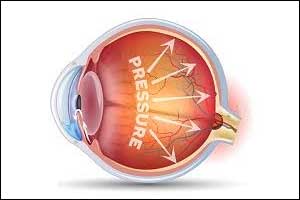- Home
- Editorial
- News
- Practice Guidelines
- Anesthesiology Guidelines
- Cancer Guidelines
- Cardiac Sciences Guidelines
- Critical Care Guidelines
- Dentistry Guidelines
- Dermatology Guidelines
- Diabetes and Endo Guidelines
- Diagnostics Guidelines
- ENT Guidelines
- Featured Practice Guidelines
- Gastroenterology Guidelines
- Geriatrics Guidelines
- Medicine Guidelines
- Nephrology Guidelines
- Neurosciences Guidelines
- Obs and Gynae Guidelines
- Ophthalmology Guidelines
- Orthopaedics Guidelines
- Paediatrics Guidelines
- Psychiatry Guidelines
- Pulmonology Guidelines
- Radiology Guidelines
- Surgery Guidelines
- Urology Guidelines
Low BP & normal ageing lead to reduced IOP in Asians

Normal ageing and reduced systemic BP are associated with reduced intraocular pressure (IOP) in Malay and Indian adults, according to a new study published in the British Journal of Ophthalmology.
Clinically, intraocular pressure (IOP) remains the only proven risk factor for primary open-angle glaucoma (POAG). Increment in IOP may occur in the absence of identified disease as a part of ageing. Recent research suggests there may be ethnic/racial differences in IOP patterns.
Jacqueline Chua and his associates conducted a study to investigate the biological effect of ageing on intraocular pressure (IOP) and risk factors in a population-based cohort study of Malay and Indian adults
The longitudinal research was carried out for 6 years and included 3,188 participants (aged 40-80 yrs), without a history of glaucoma or cataract surgery at baseline.Change in IOP from baseline to 6-year was measured. Association between IOP and systemic factors were assessed using multivariate linear regression models.Blood pressure (BP) was measured with an automatic BP monitor and IOP were obtained by Goldmann applanation tonometry. Main outcome was change in IOP, defined as the difference between the 6-year IOP and the baseline IOP.
The study found that after 6 years of follow-up, normal ageing is associated with a reduced IOP, while individuals who were women of Indian ethnicity, with diabetes, those having higher BMI and greater change in systolic and diastolic BP are associated with greater change in IOP in Malay and Indian populations. Lower IOP was found in participants taking β-blockers .
The study concluded that changes in IOP are directly and significantly associated with changes in systemic BP. High IOP is a risk factor for glaucoma, hence it’s important to control hypertension in older adults where hypertension and glaucoma incidences are on a rise.
The study was published in the British Journal Of Opthalmology.

Disclaimer: This site is primarily intended for healthcare professionals. Any content/information on this website does not replace the advice of medical and/or health professionals and should not be construed as medical/diagnostic advice/endorsement or prescription. Use of this site is subject to our terms of use, privacy policy, advertisement policy. © 2020 Minerva Medical Treatment Pvt Ltd